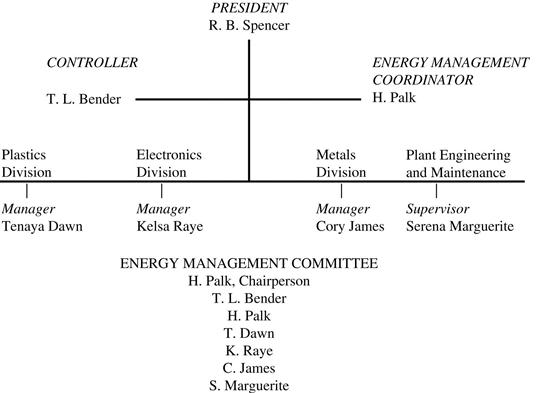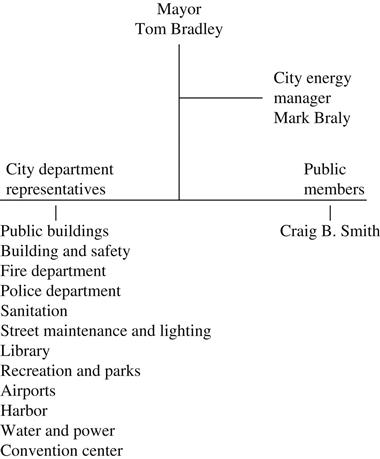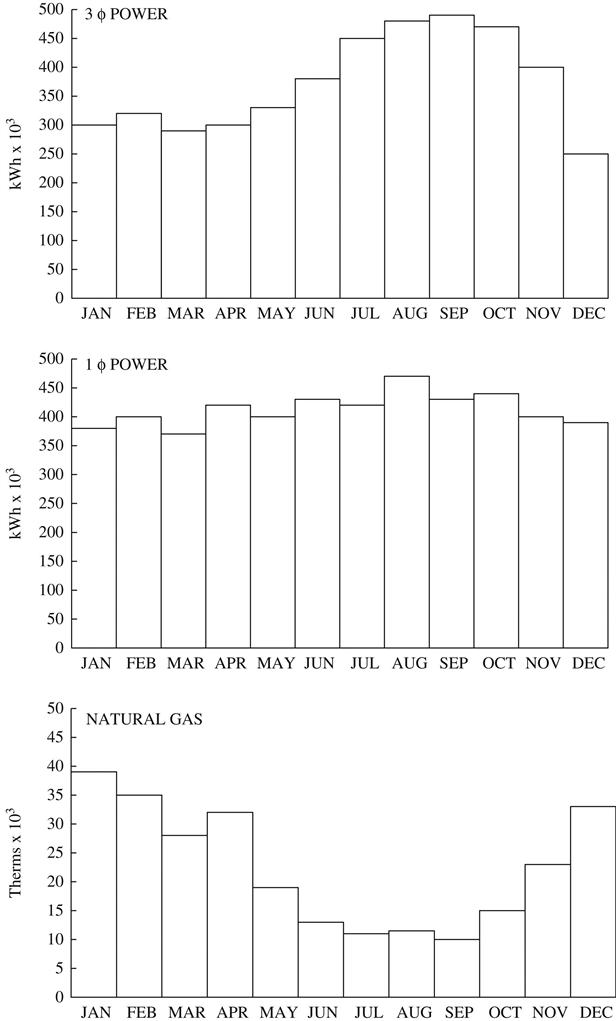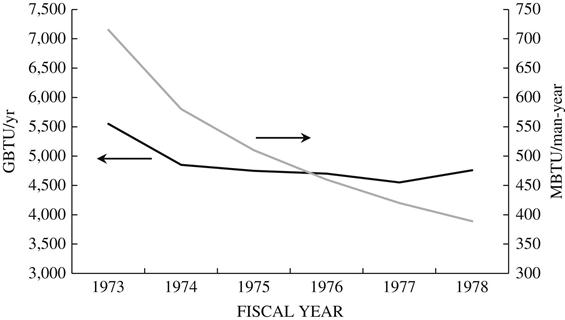Planning For Energy Management
Abstract
This chapter discusses the planning required to establish an effective energy management program based on a three phase process: (i) initiation and planning; (ii) audit and analysis; and (iii) implementation and continuous assessment. It describes some of the common challenges that often arise during the planning stage and suggests ways to overcome them. Because historical review is one of the first steps in any energy management program—and it is the first of the 16 energy management principles presented in Chapter 3—this chapter introduces methods for reviewing historical data and explains the primary objectives of historical review, including establishing baseline energy use patterns and gaining practical insight for energy management opportunities. It also provides an overview of the subsequent steps in the process and identifies the chapters in the book that cover those steps in detail.
Keywords
Planning; management commitment; energy champions; addressing barriers; historical review; baseline; energy audit; analysis; implementation; continuous assessment
Introduction
The stimulus to start an energy management program must come from somewhere. It could originate from a variety of potential sources, including a concerned individual who has noticed excessive compressed air leaks in the production area, a facility maintenance manager discouraged by the increasing time requirement for repairing old equipment, a company president who is suddenly made aware of rising energy costs, a corporate (or government) mandate to reduce carbon footprint, a utility account manager who notifies the company of an opportunity for great incentives, or the more extreme case of a local utility announcing it is going to curtail the factory’s fuel supply.
Reducing energy costs or complying with regulations of one sort or another are usually the motivation. However, even companies that do not face high energy costs find that an energy management program pays for itself by eliminating waste and reducing costs; it may also offer the company a marketing advantage or improved public image because they can potentially tout themselves as a green business. For example, in a group of California hospitals, the Hospital Association correctly recognized that an energy management program could reduce operating costs. Perhaps more importantly, the association realized that such a program would be visible evidence that the hospitals were attempting to control costs, and therefore had important political implications, even though energy costs were small fraction of total operating costs. In many cases, there are several simultaneous motivating factors for establishing an energy management program due to the myriad drivers and benefits, such as those outlined in Chapter 2.
Now suppose that the time is appropriate to initiate a program, regardless of whether the stimulus was passed down from top management or was passed up the line from the operations end of the firm. Where does one begin? An energy management program can be organized in many ways, but we suggest organizing it in three primary phases:
Table 4.1 outlines the planning steps necessary to establish the program. Being proactive and following this systematic process, rather than just reactively implementing projects when energy efficiency problems can no longer be ignored, greatly increases the likelihood of on-going success and continuous energy improvement.
Table 4.1
Planning an energy management program
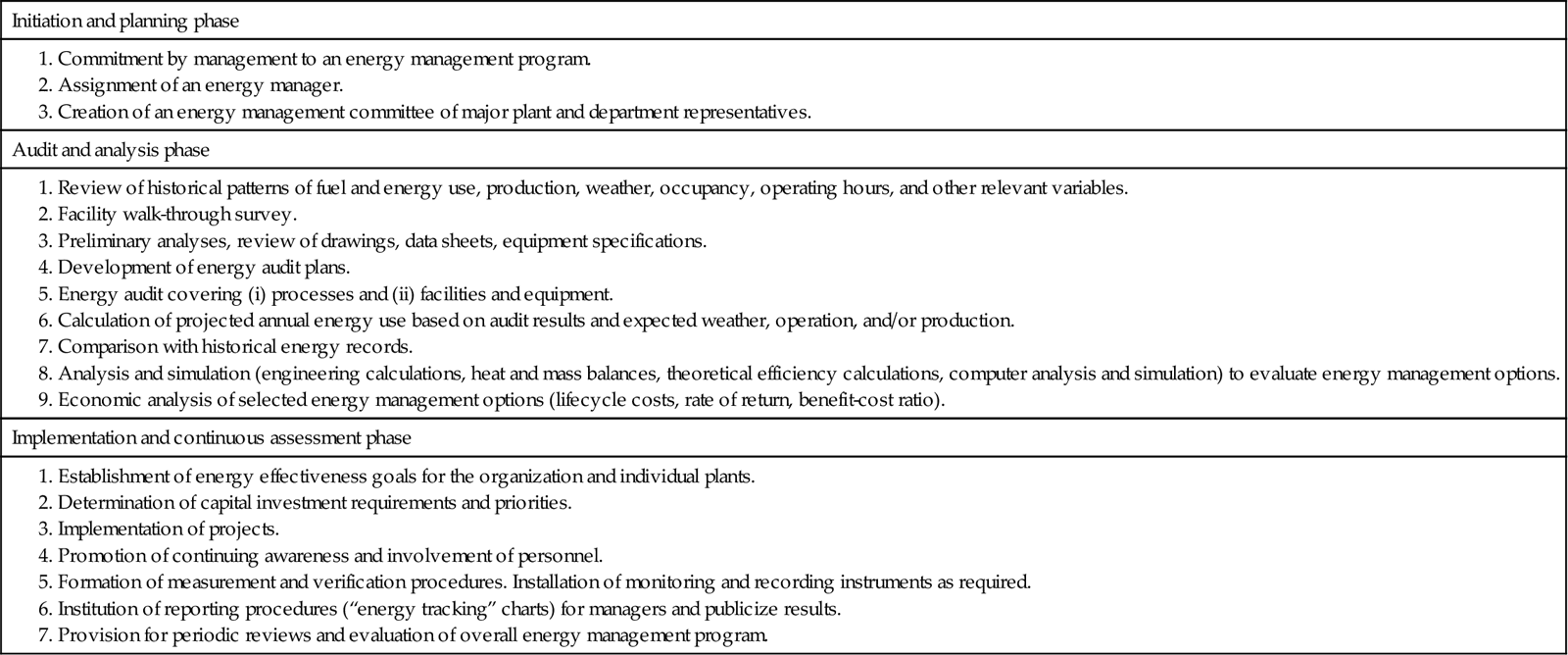
Initiation and Planning Phase
Importance of Management Commitment
Regardless of the motivation for the program, it will not succeed without a commitment from the firm’s top management. For this reason, Table 4.1 lists this as a first step in the initiation and planning phase. Management must be convinced of two key things, first, the need, and secondly, the potential economic returns that will result from investing time and money in the program.
Obtaining management commitment often requires the presentation of facts, figures, and costs concerning current energy usage, along with estimates for the future and projected savings. Therefore, it may be necessary for the person responsible for encouraging program development to do some degree of historical review prior to the audit and analysis phase to help sell the concept to management, unless, of course, management is the stimulus for the program.
Energy Champions
Once management commits to the program, the next step is to name one individual the energy manager. The energy manager may be a member of the engineering staff in a large firm, or a maintenance supervisor, electrician, or foreman. The energy manager’s core responsibilities are to ensure the energy management program is accepted by staff and operates effectively. This is no easy task without the support of management and other energy champions.
Therefore, the energy manager’s first step might be to formulate an energy management committee with representatives from each key department or division using energy, depending on the size and complexity of the firm. A representative from the accounting department would be another good addition. Next, the energy manager should explain to the department heads and line supervisors the need for the program, taking into consideration the economic and other motivating factors driving the program.
Collectively, the committee’s main responsibilities will be to ensure the program has reasonable targets and that goals are successfully met from the “ground up.” Therefore, the committee should take steps to inform all personnel—from office staff to the production line—of the need, emphasizing that efforts will be placed on reducing waste and improving productivity and profitability. The energy manager and committee could even devise an incentive system whereby personnel are awarded for identifying energy management improvements.
Figure 4.1 shows an example of an energy management organization chart for an industry with three principal divisions. The president established an energy management committee consisting of an energy manager (appointed by the president) and representatives of each of the three manufacturing divisions, plant engineering and maintenance, and the central power plant. The purpose of this committee is to coordinate plans, bring in new ideas and perspectives, and to ensure that actions taken in one part of the plant do not have an unfavorable effect on another part.
A similar approach can be taken by a city. For example, following the 1973 oil embargo, Los Angeles experienced serious shortages of fuel oil and was forced to implement a mandatory program of electricity cutbacks in the residential, commercial, and industrial sectors. As the city struggled with the problems caused by these changes, the mayor created an interdepartmental energy conservation committee (Figure 4.2). This committee met periodically, reviewed or proposed new rules and regulations, initiated a system of energy reporting for the various city departments, initiated energy audits in public buildings, and provided liaison for a series of other energy management initiatives.
Addressing Institutional Barriers
There are often instances where efficient energy use is discouraged by other factors. The energy manager should be aware of these barriers and should understand how to deal with them when confronted. They fall in several broad categories:
• Economic: Rate of return is too low, or lower than alternative investments; capital is not available; unwillingness to make short-term investments for long-term returns. This is one of the most prevalent challenges faced by energy managers and energy champions. However, there are funding opportunities that can help address this barrier. Most utility companies—gas and electric—offer a wide variety of programs that provide services or financial incentives to encourage efficient energy use. Exploring utility program opportunities is an important first step for energy managers. (see Chapter 5 for more information on utility rates and programs). Additionally, some energy service companies (ESCOs) offer financing support or energy performance contracts to firms whereby the ESCO pays the capital costs and the firm repays the debt out of money saved on their energy bills; these contracts typically involve performance guarantees so that the firm only pays if the energy savings were actually realized.
• Ownership: Unwillingness to make investments in leased buildings or equipment. A classic example is a tenant in a leased building refusing to make investments to improve the inefficient air-conditioning system on the grounds that “it would only benefit the owner.” This decision could be the correct one. On the other hand, if the investment would pay back in less time than the term of the lease, if might be justified by the operational savings alone. Ideally the landlord could be enticed to participate and provide some cost-sharing, especially since the energy upgrades would help attract future tenants.
• Tradition, precedent: “This is the way we’ve always done it”; “we’d rather invest in expanded production capacity”; “we’d have to hire new maintenance personnel or train existing staff on how to use the more sophisticated systems and controls”; “it’s easier to patch problems as they occur instead of taking the time to make the case to management for new equipment.” These are all real issues, but some of the easier issues to overcome with a little education and training. Even the desire to invest in expanded production capacity can be addressed at least partly by efficiency improvements that inherently increase productivity.
• Priorities: Energy is a low cost item, a small part of value added in manufacturing, or not a core business focus; “we have to worry about more important things.” We have heard these arguments from many of the businesses we have talked to over the years. The staff is extremely busy and so focused on the core business function that they simply do not have time to explore energy management improvements. In this case, the impetus for a program may actually come, at least in part, from an external party such as a utility account representative. Some utilities, such as BC Hydro, even have programs that provide energy managers and energy management training for their customers.
The energy manager will have to explore each situation on a case-by-case basis to find appropriate solutions.
Audit and Analysis Phase
After the program initiation and planning phase, the audit and analysis phase begins. This phase consists of a detailed review of historical data, energy audits, identification of energy management opportunities, energy analysis, and economic evaluation. It involves determining where and how energy is being used and identifying opportunities for using energy more effectively.
Historical Review
First consider the methods and objectives of the historical review. Data for the historical analysis can be compiled from utility bills, facility records of operating schedules and shifts, equipment inventories, production statistics, or any other available source of data. The objective is to understand both near- and long-term trends in energy usage. For example, what is the reference base, or baseline, of energy use that the energy management program will attempt to modify? Also, what are the past patterns of energy use and what do they signify for the energy management program?
Insight into the following types of trends can be useful to the energy manager:
• Is historical energy use increasing or decreasing? (Consider the past 2–5 years.)
• Are there seasonal variations in energy use? (Summer or winter peaks?)
• How complete is the database? (Energy use for the whole plant, for each division, etc.)
• What have been past trends in energy costs? (10% annual escalation or what?)
• Are there temporal variations in energy use? (Off-shift versus on-shift; weekend versus weekday, etc.)
Example. Historical energy use in a small manufacturing plant. (See Figure 4.3.) In reviewing the historical energy use data, we note that there is a summer electrical peak and a winter gas peak. One might ask: “Are these related to process energy use or space conditioning?” The summer peak could be caused by greater plant output or longer hours of operation. Or, it could be due to the use of air conditioning. This suggests an area for future investigation. Another question: even during the summer months, there is gas usage of 10,000 therms per month. Why is that?
In many cases, it is useful to relate historical energy use to variables that affect usage. There are four variables that commonly influence energy use patterns:
There could also be other relevant variables driving energy use, including the nature of the raw materials used to manufacture the products. For example, lower quality materials may be more energy intensive to process.
In some climates certain types of construction tend to follow ambient temperatures. If this is the case, energy use for space conditioning will correlate with the degree days of heating and cooling.1 The relationship between energy use and degree days can be readily estimated with regression analysis. Where such an analysis is appropriate, comparison of energy usage and weather data for the past 2–5 years can give very valuable insight into the space conditioning component of energy use. For example, if the results show a consistent correlation across the years, then the systems are probably functioning properly. However, changes in weather-adjusted energy use patterns can signify problems in the equipment or its operation.
Energy use also tends to trend with operating hours and production schedules, so usage should usually be lower when businesses are closed or not fully staffed. Access to interval energy data—that is, data collected at hourly, 15 min, or even smaller intervals—allows analysis of daily or weekly trends, in addition to the seasonal and yearly trends available from monthly energy bills. Reviewing energy data at a more disaggregated level can reveal problems such as lights, space conditioning, or other equipment operating when they are intended to be off. This could indicate, for example, a programming error in the facility’s energy management and control system, which is an easy fix. It could also be due to employee behavior, which can be addressed with education and training.
Often it is useful to relate historical energy use to some measure of productivity. This not only gives information useful in assessing the operation of a particular plant or process, but can also provide comparative data between two or more similar facilities for benchmarking purposes. (Unless they are situated in locations having similar climates, be careful of comparisons that do not take into account the effect of weather on energy usage.)
Such energy indices can be found in a variety of businesses. Typical indices are energy content in MJ/kg for metals, chemicals, and cement, or fuel consumption per passenger or ton-kilometer, for transportation systems. Other indices evolve to meet specific needs (e.g., energy use per meal served in a restaurant; energy use per guest day in a hotel; annual energy use per patient day or per bed in a hospital; energy use per widget produced in a factory).
Sometimes energy indices reveal trends not apparent from the straight historical data. Figure 4.4 shows total energy use and energy use per employee for a large government research facility that launched an energy management program. The black line shows total use, which decreased slightly up to 1977 and then increased in 1978. The grey line shows energy use per employee. Interestingly enough, during the 5-year period shown, the number of research programs underway in this facility grew significantly, leading to increased employment. When the effect of increased employment is included, the payoff from energy management program is more impressive.
For a meaningful comparison of trends, it is important to make sure the timing of the production data aligns with the timing of energy data when developing the energy indices. When there is a mismatch in the time periods, it is difficult to get an accurate correlation. Also, for facilities that produce more than one product, it may be necessary to develop a different energy index for each product unless they have similar energy intensities. (A recent paper we contributed to describes baseline development in industrial facilities in greater detail.)2
Besides revealing certain patterns and trends in energy use, historical review provides the basis for comparison with the energy audit and other subsequent work. It is a critical step for establishing the initial baseline at the process or facility level. However, the historical review in itself never provides sufficient information for formulating an effective energy management program. Few facilities will have sufficient metering instrumentation to provide a detailed breakdown of energy use at the system or equipment level throughout the plant.
Energy Audit
In the energy audit, the auditor or audit team collects detailed information for each piece of equipment, lighting systems, Heating, ventilating, and air conditioning (HVAC) systems, and processes, and sometimes information on the building construction. The energy manager and energy committee then use results of the audit to delineate major areas of energy use and to formulate the next steps in the energy management plan. The audit can be done on a process-by-process basis or on a building or facility basis, depending on the scope defined during the planning and initiation stage. Auditors may include members of the firm’s maintenance or technical staff or outside energy specialists could be brought in to conduct the audit. Ideally, the audit team will have a combination of experienced energy engineers who know how to identify issues and opportunities and facility personnel who are intimately familiar with the facility’s systems and operations.
To obtain detailed system data, the auditor may choose to measure loads and equipment operating hours (in hours per day, week, or month) using metering equipment, or he or she may use equipment nameplate specifications and knowledge of the typical loads and operating hours to estimate energy and demand. If weather-sensitive loads like space conditioning equipment represent the largest end-use in the facility, the auditor may decide to develop a model of the building and then simulate energy usage based on different weather scenarios. After accounting for and calculating energy use for all of the major loads, auditors can compare the findings with historical records. Agreement does not have to be perfect—and it most likely will not be—but significant discrepancies should be investigated to determine the source and to verify that major items have not been overlooked or usage overestimated.
Since the audit includes inspection and analysis of all equipment and systems within the scope of the program plan, it is one of the major ways to identify and flag options for more efficient energy use. Because energy audits are so useful, we have dedicated an entire chapter to them; see Chapter 6 for more detail.
Energy and Economic Analyses
The next step is to investigate more thoroughly the options discovered during the audit along with any other potential opportunities under consideration. This investigation involves energy and economic analyses for each energy management opportunity. The analysis results help the energy management committee define goals and select promising projects to implement based on the organization’s priorities. Energy and economic analyses of potential projects represent the most technically challenging portion of the energy management program and, thus, account for the majority of this book. Chapters 7–13 cover these topics in detail. Throughout those chapters we identify additional sources of information to assist new energy management practitioners.
Implementation and Continuous Assessment Phase
The final phase in the energy management program is really an on-going process. It comprises establishing energy usage goals; prioritizing and implementing projects; defining measurement, verification, and reporting procedures; promoting on-going awareness and involvement of personnel; and continually assessing program goals and achievements.
Establishing Goals
After the audit and analysis phase, the energy management committee has all the necessary information for establishing meaningful energy management goals and realistic energy usage targets at the system, process, building, plant, or organization level. In the case of large organizations or multinational corporations, some goals may actually have been set prior to initiating the energy management program.
Prioritizing and Implementing Projects
Prioritizing and implementing projects identified thus far is one of the most critical aspect of the entire program, since taking action to realize improvements is the central goal of an energy management effort. Project ranking will depend somewhat on the specific priorities of the organization, such as expected economic return, meeting regulations, carbon footprint, fuel availability, production requirements, etc.
Obviously, one requirement of the implementation phase is that the organization or firm be prepared to make the investments necessary to begin saving energy. It is generally useful to categorize the energy management opportunities identified into three groups:
These groups call for an increasing scale of capital investment, ranging from zero to minimal for housekeeping changes, to extensive for options requiring new construction.
Inform, Train, and Motivate Personnel
The implementation and continuous assessment phase also includes actions to inform, train, and motivate personnel so that the organization fosters a strong sense of involvement and ownership of the energy management program by everyone from the factory worker or office employee to the maintenance personnel and all the way up to top management. This point deserves emphasis since it is ultimately human beings that are entrusted with these marvels of engineering that are supposed to save all this energy and money. Experience indicates that more efficient equipment and improved processes are only “half the battle.” Obviously, it makes little difference how efficient the plant and equipment are if any of the following are true:
• Operating personnel do not understand the need for efficiency.
• They do not believe in the need.
• They do not know how to operate their new, improved equipment.
The human element is vital, and is all-too-often ignored.
Measure, Verify, and Report Performance
A very important element of this phase is to take measurements, monitor equipment, and verify that systems are operating as expected and energy use and performance targets and goals are being met. These actions reflect the fundamental management concept that people are only able to operate effectively if two conditions are in play:
• They know what they are supposed to accomplish.
• They receive feedback that tells them how well they are doing.
For long-term success and to prevent inefficient habits from returning, it is essential for this assessment to take place on an on-going basis.
Continuous Program Assessment
Finally, the program must succeed. It must be reviewed periodically to determine its strengths and weaknesses. It should be flexible, capable of responding to changing economic conditions (energy prices, cost of goods and services), new regulations (equipment, building, environmental), corporate mandates (energy indices, carbon footprint, other priorities), and to evolving program needs (a new process or building is added, an old one is shut down). Continuous assessment also permits a review of the success of implemented projects and provides a basis for revaluating other projects that failed to pass the first screening during the original implementation plan. Chapter 14 describes the implementation and continuous assessment phase in more detail.
Conclusions
An effective energy management program must begin with management commitment. The next step is to evolve a plan for subsequent actions. A review of historical patterns of energy use provides the foundation for energy audits and further engineering studies and analysis. Early in the program, suitable criteria must be established for evaluating possible energy management projects. Training, personal awareness, and information programs are vital. The success of any program depends as much on human motivation as it does on technology.

